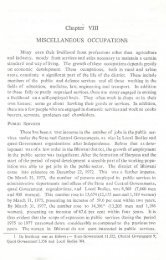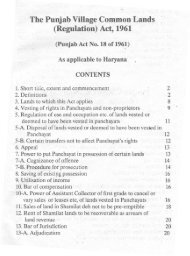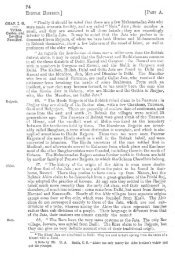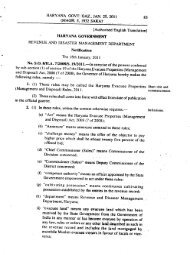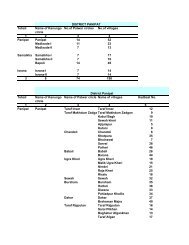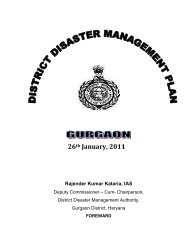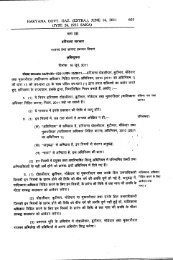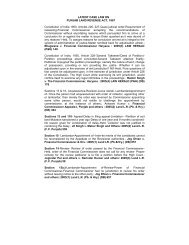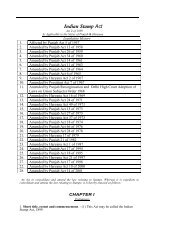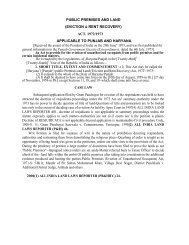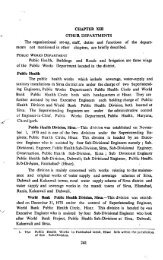CHAPTER XI REVENUE ADMINISTRATION Sirsa seems to beinthe ...
CHAPTER XI REVENUE ADMINISTRATION Sirsa seems to beinthe ...
CHAPTER XI REVENUE ADMINISTRATION Sirsa seems to beinthe ...
You also want an ePaper? Increase the reach of your titles
YUMPU automatically turns print PDFs into web optimized ePapers that Google loves.
SIRSA DISTRICT GA.ZBTTSBR<br />
"!I '<br />
only land holding tax was collected. The collection of land holding tax during<br />
1975-76 <strong>to</strong> 1980-81is given below<br />
Year ending Land Holding Tax<br />
(Rs)<br />
1975~76 t 58,35,220<br />
1976-77 :58,49,746<br />
1977-78 "58,62,836<br />
1978-79 46,01,498<br />
1979-80 (35,66,444<br />
1980-81 {42,85,6l7<br />
Special Cesses.-The cesses levied in the district included school cess,<br />
road cess, Patwari cess and Lambardari cess. In 1871, the local rate was imposed<br />
at 61 per cent raised <strong>to</strong> 8f per cent in 1878. Thus in 1878, the cesses were<br />
school cess at 1 per cent of land revenue, road cess at 1 per cent, Patwari cess at<br />
61 per cent, Lambardari at 5 per cent and local rate at 8f per cent. These<br />
cesses added with rent of newly cultivated land, cost of village watchmen and<br />
messengers, common expenses of the village including stationery .of Patwari<br />
and repairs of his office and later imposed post cess of lper ,cent amounted <strong>to</strong><br />
35 per cent of the land revenue demand. These cesses swallowed up.a ~nsid,erable<br />
proportion of half net prpfits of cultivation. The leaders of original body<br />
of colonists came <strong>to</strong> be known as Lambardars and ~n the introduction of the<br />
British rule, the lease granted <strong>to</strong> the village communitie~ were made out in the<br />
name of those headmen. The headmen were representatives of the village<br />
communities in its transaction with the government; they signed engagements<br />
for whole village and collected the land revenUe and other dues and paid them<br />
in the treasury:. In 1862, it was found that in many villages there were as many<br />
headmen as proprie<strong>to</strong>rs. Therefore, one or two according <strong>to</strong> the size of the<br />
village were selected as headmen and the others were left out as proprie<strong>to</strong>rs only. '<br />
During the revision of settlement, 1879-83,Zaildars were appointed against,<br />
the payment of 1 per cent of the revenue realised by the government. Thus<br />
there were 34 Zaildars in the then <strong>Sirsa</strong> area, with an average annual emoluments<br />
of Rs; 62 in <strong>Sirsa</strong> and Rs'. 37 in Dabwali. The Zails were very small and<br />
in many cases, these were very much scattered. During the settlement of 1901-<br />
02, the scattered Zails were apportioned among neighbouring Zaits and their<br />
number was reduced <strong>to</strong> 20. The Zaildars were graded in<strong>to</strong> 3'categories, 2 Zaildars<br />
at Rs. 200 e~ch, 5 at Rs. 150 each and 13 at Rs. 100 each. 'Besides, 10<br />
Inamdars at Rs. 5P each were appointed.



